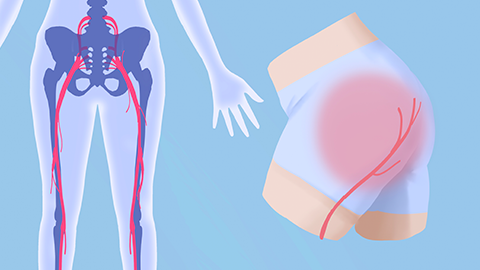What are the symptoms of sciatica?
Generally, the main symptoms of sciatica include radiating pain in the lower limbs, numbness in the lower limbs, weakness in the lower limbs, low back pain, and abnormal posture. If discomfort symptoms occur, it is recommended to seek timely diagnosis and treatment at a regular hospital. Detailed analysis is as follows:
1. Radiating Pain in the Lower Limbs
When the sciatic nerve is compressed or irritated by inflammation, pain signals travel along the nerve to the lower limbs, causing radiating pain. Patients often experience pain starting from the waist and buttocks, radiating to the posterior thigh, lateral calf, and foot. The pain is usually described as sharp, aching, or shock-like, and may worsen with coughing, sneezing, or bending forward.

2. Numbness in the Lower Limbs
After injury to the sciatic nerve, nerve conduction function is affected, leading to abnormal sensations and numbness in the lower limbs. Patients may feel numbness or swelling in specific areas of the lower limbs, with delayed tactile sensation. Some individuals may also experience sensations resembling crawling ants or burning.
3. Weakness in the Lower Limbs
Prolonged nerve compression or inflammation can affect the nerve's control over muscles, resulting in decreased muscle strength in the lower limbs and causing weakness. Patients may feel their legs are weak and unable to support body weight while walking. Activities such as climbing stairs or standing on tiptoes may become difficult, and severe cases may develop foot drop, making it impossible to lift the toes normally.
4. Low Back Pain
Sciatica is often associated with lumbar spine disorders. Lumbar disc herniation can compress the nerve roots, causing lumbar muscle tension and inflammation, which leads to low back pain. Patients often experience aching or dull pain in the lower back, which worsens after prolonged sitting, standing, or lifting heavy objects, and may temporarily improve with rest.
5. Abnormal Posture
To alleviate pain, patients unconsciously adjust their body posture, leading to abnormal body positions. For example, when standing, they may lean toward the unaffected side; when walking, they may adopt a limping gait to reduce loading on the affected limb; when sitting for long periods, they may choose a posture leaning toward the unaffected side. Long-term compensation may lead to spinal curvature, muscle imbalance, and other problems.
If the above symptoms are present, individuals should avoid prolonged sitting or standing, choose a mattress with appropriate firmness, avoid lifting heavy objects by bending the waist, and when standing up, turn sideways first and then rise slowly.









